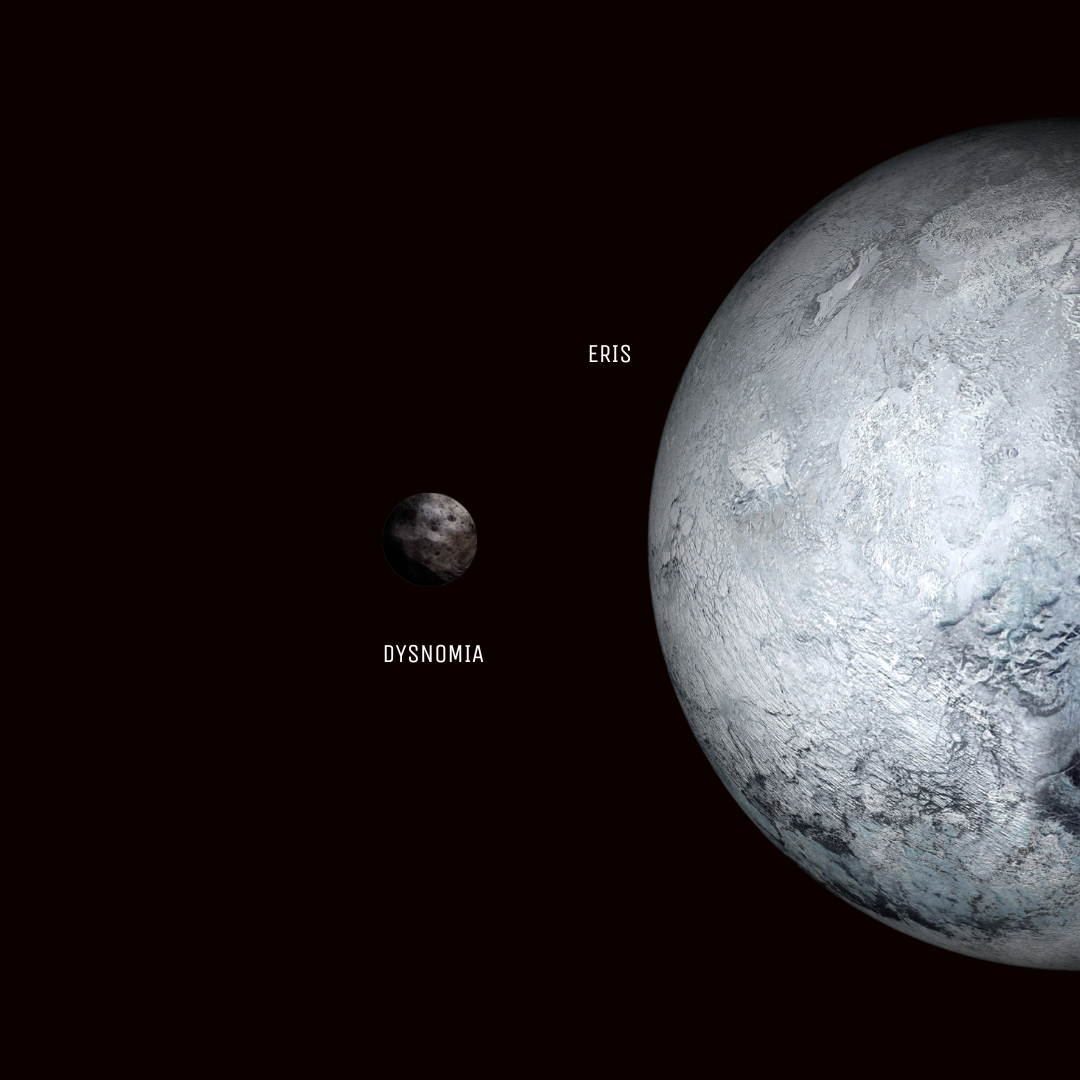Eris, initially known as 2003 UB313, was discovered on January 5, 2005, by a team of astronomers led by Mike Brown at the Palomar Observatory in California. Eris is a trans-Neptunian object (TNO), located in the scattered disk, a region of the outer solar system beyond the Kuiper Belt. In September 2006, Eris's discovery led the International Astronomical Union (IAU) to redefine the classification of celestial bodies, resulting in the demotion of Pluto to dwarf planet status. Eris's moon, Dysnomia, was discovered in September 2005.
- Properties of Eris and Dysnomia
Eris has an estimated diameter of 2,326 kilometers, making it slightly smaller than Pluto. Its highly elliptical orbit takes approximately 557 Earth years to complete, with a perihelion of 37.9 astronomical units (AU) and an aphelion of 97.6 AU. Eris has an axial tilt of 44 degrees, which results in extreme seasonal changes. The dwarf planet's surface is predominantly composed of methane and nitrogen ices, and it has an estimated temperature of -243.2 degrees Celsius.
Dysnomia, Eris's only known moon, has an estimated diameter of 700 kilometers and orbits Eris at a distance of approximately 37,370 kilometers. The moon's orbital period is 15.77 Earth days. Dysnomia's composition is assumed to be similar to Eris, but further investigation is needed to confirm this.
- Formation of Eris and Dysnomia
The prevailing hypothesis for the formation of Eris and Dysnomia involves a giant impact event. Similar to the Earth-Moon system, it is believed that a collision between Eris and another TNO in the early solar system resulted in the creation of Dysnomia. The debris from this impact coalesced over time to form the moon, while the remaining material was either incorporated into Eris or ejected from the system.
- Exploration of Eris and Dysnomia
There have been no missions to Eris or Dysnomia to date, with our knowledge of these bodies coming primarily from ground-based telescopes and the Hubble Space Telescope. Future missions to Eris and Dysnomia could provide invaluable information about the formation and evolution of the outer solar system, the nature of TNOs, and the history of the early solar system.

